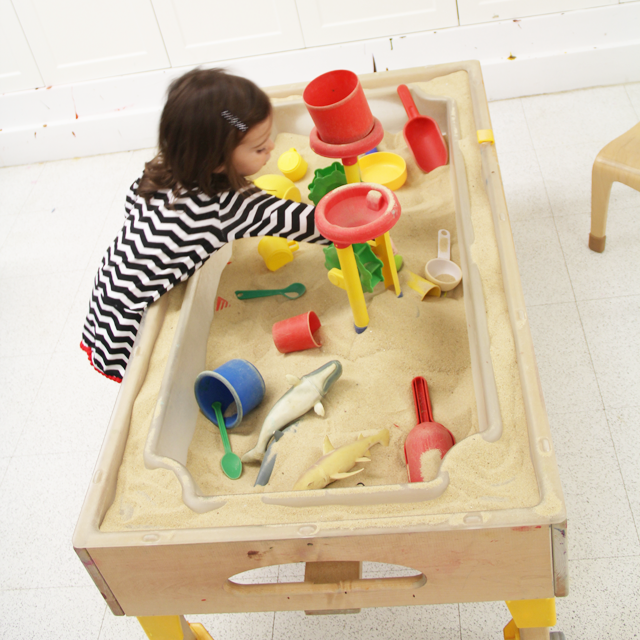Inside the Classroom: Sensory Table

SHARED by: Maria Mavrides, Head Twos Teacher, Early Learning Foundations Preschool
If I had to pick one material I couldn’t live without, I would have to say my sensory table. Every two weeks I switch the materials inside the table to create new interest and challenges. Some examples of the materials I use are: sand, rice, colored rice, beans, water, shaving cream, pasta, insta-snow, oatmeal, flour, goo, mud and cotton balls. Two-year-olds learn through experience, not just words. My students need to use their senses and be engaged in meaningful experiences. As we talk with them about what they are observing and sensing, we give them new language tools to connect with these more familiar sensory tools, building language as well as supporting cognitive concepts specific to the experience. There had been several studies that show that sensory experiences increase cognitive pathways in young children, which paradoxically makes them able to better capture more sensory experiences. In other words, they become better learners.
As a science lover, the sensory table provides me with the opportunity to teach children about the scientific process. Children develop inquiries, test them and conclude how a material smells, pours, weighs, etc. The children may not be able to tell us the data they are collecting, but by trial and error they find out how to answer their scientific inquiries on their own.
The fine and gross motor benefits are also evident. Children practice pouring, grabbing and mixing different substances, improving hand strength and coordination. Cognitive skills are strengthened as the contents of the table relates to concepts we are learning as a group. The fact that the sensory table is an open ended activity guarantees that all children find success, making it an ideal activity for children that don’t deal well with frustration.
Finally, the sensory table is the watering hole of my classroom and as such children learn to negotiate conflict as they learn how to (and not to) use the materials, share tools, share space (body awareness), create new scenarios (imaginative play), include other materials and play with each other.









